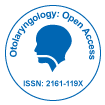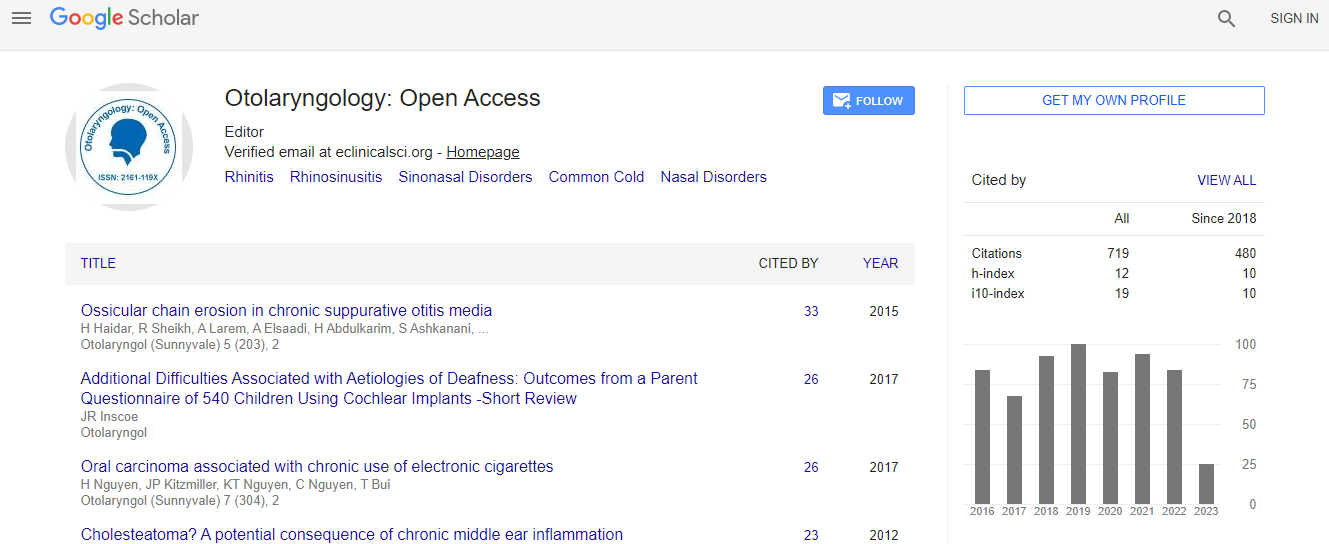Our Group organises 3000+ Global Conferenceseries Events every year across USA, Europe & Asia with support from 1000 more scientific Societies and Publishes 700+ Open Access Journals which contains over 50000 eminent personalities, reputed scientists as editorial board members.
Open Access Journals gaining more Readers and Citations
700 Journals and 15,000,000 Readers Each Journal is getting 25,000+ Readers
Google Scholar citation report
Citations : 925
Otolaryngology: Open Access received 925 citations as per Google Scholar report
Otolaryngology: Open Access peer review process verified at publons
Indexed In
- Index Copernicus
- Google Scholar
- Sherpa Romeo
- Open J Gate
- Genamics JournalSeek
- RefSeek
- Hamdard University
- EBSCO A-Z
- OCLC- WorldCat
- Publons
- Geneva Foundation for Medical Education and Research
- ICMJE
Useful Links
Recommended Journals
Related Subjects
Share This Page
Pediatric Sleep Questionnaire As A Screening Tool To Predict Surgical Intervention In Pediatric Sleep Related Breathing Disorders – A Prospective Study
Joint Event on 4th European Otolaryngology-ENT Surgery Conference & 3rd International Conference on Craniofacial Surgery
Varada Elamon and George Kuruvilla
FRCS (Glasg.), Fellowship in Paediatric ENT (Canada)
Posters & Accepted Abstracts: Otolaryngol (Sunnyvale)
Abstract
Paediatric Sleep Related Breathing Disorders (SRBDs) is viewed as a continuum of severity from partial obstruction of the upper airway to continuous episodes of complete upper airway obstruction or obstructive sleep apnoea (OSA). A few published validated questionnaires have been designed to assess the SRBDs and associated symptoms occurring in children. Sleep endoscopy is a consistently reliable tool, which is well established now a days for identifying the site of obstruction in children with SRBDs. The objective of this study was to evaluate the effectiveness of Paediatric Sleep Questionnaire (PSQ) score in predicting the need for surgical intervention in children with SRBDs using the following parameters:1. By co-relating the PSQ score with sleep endoscopy results in children with SRBDs.
2. The use of PSQ scores as a screening tool to predict the need of surgical intervention in paediatric SRBDs.
Methodology: This prospective observational study was conducted in the Department of ENT, Lourdes Hospital, Kochi, Kerala from December 2015 to November 2017. A total of 60 patients clinically suspected to have SRBDs and posted for sleep endoscopy study were selected. On the day of admission, after undergoing routine ENT examination, the parents were requested to answer the questions in the validated Paediatric Sleep Questionnaire. The patient then underwent sleep endoscopy on the following day and the site and severity of obstructions was assessed followed by possible surgical intervention. The score obtained from the PSQ for a particular patient was then co-related with the sleep endoscopy findings with or without surgical intervention.
Results: In this study the PSQ score was found to be effective as a screening tool in predicting the need for surgical intervention in children with SRBDs. The PSQ score obtained also co-related well with the endoscopically assessed severity of obstruction.

 Spanish
Spanish  Chinese
Chinese  Russian
Russian  German
German  French
French  Japanese
Japanese  Portuguese
Portuguese  Hindi
Hindi 
